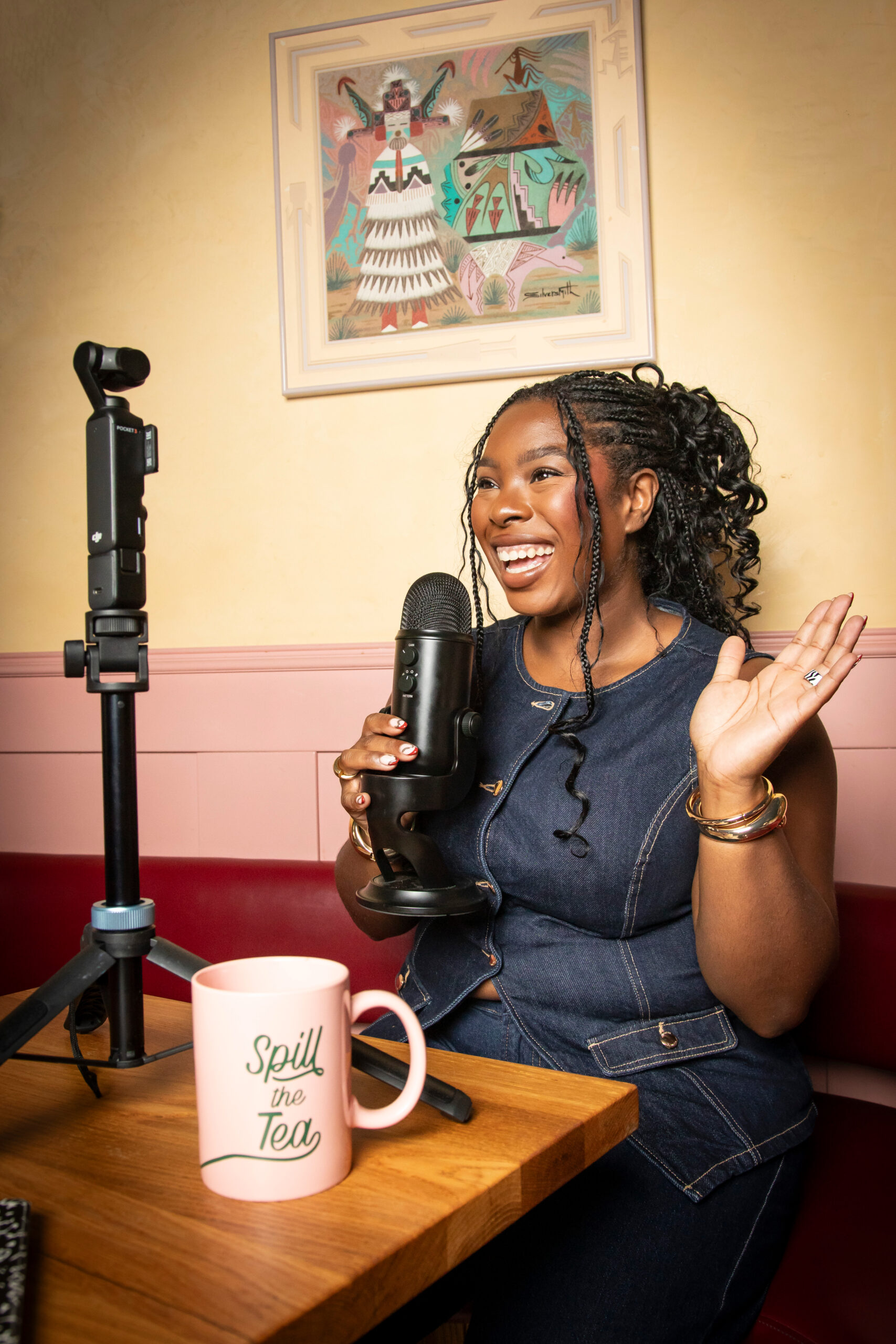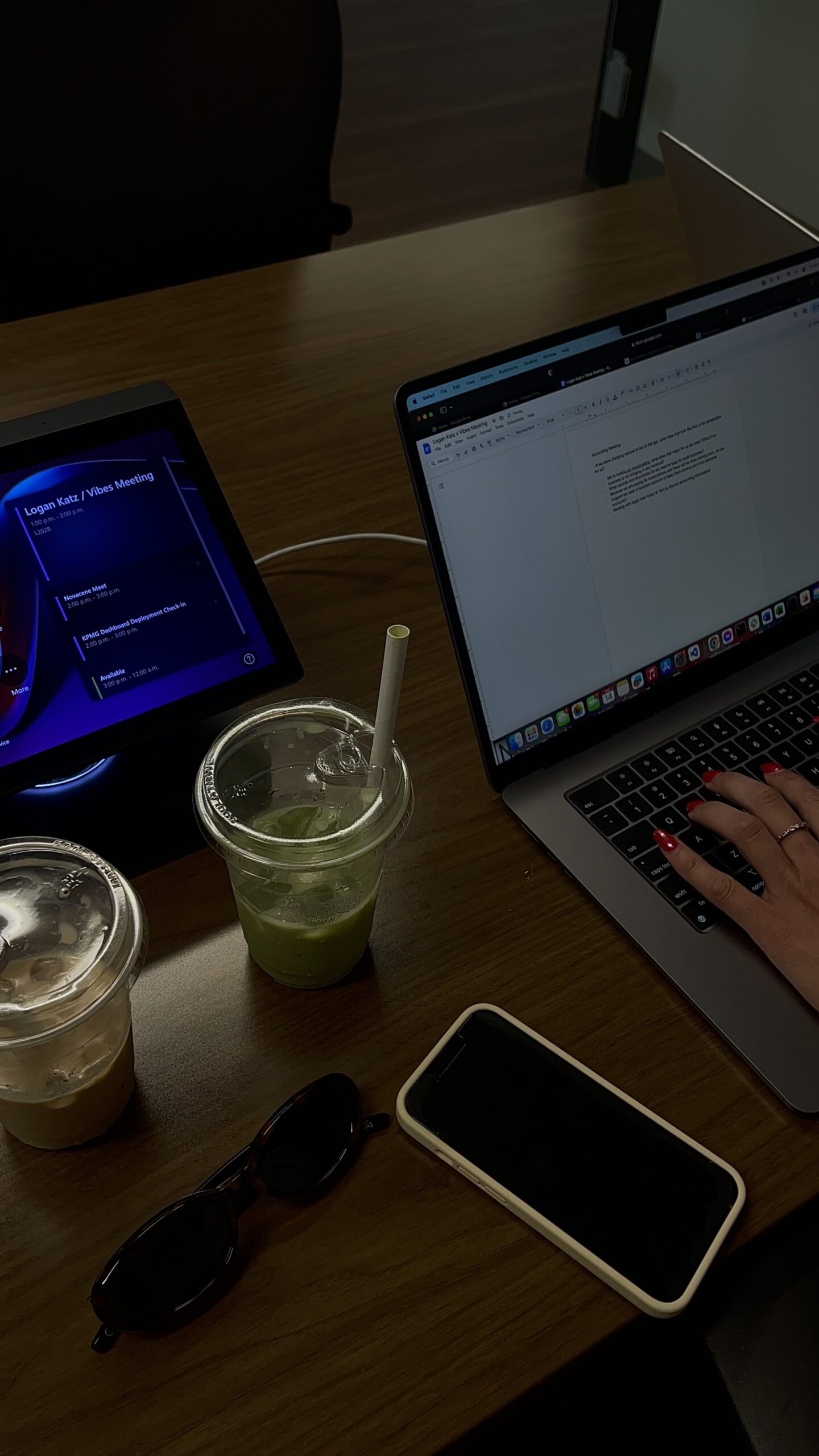HEY FRIEND!
I'm jemilla!
In the past 4 years, I’ve cut my teeth strategizing & writing award-worthy, revenue-increasing, results-snatching copy. And what really lights my fire is writing for woman-owned and BIPOC-led brands. I’m talkin’ the first day after a braiding appointment type of excited! Energizing them to go big with their bold ideas so that when launch time happens, the world thinks “OMG FINALLY, I’ve been waiting for something like this.” And giving them the tools to diversify the market.
about me
services
How to Write Compelling, Conversational, and Culturally-Relevant Copy
February 14, 2025
So my whole thing is I help women & BIPOC business write compelling, conversational, and culturally-relevant copy. But what even is that, and how do I do it?
Well first thing to mention is why this even matters. Copy’s whole purpose is to get people to take action. But with over 28 million eCommerce sites globally, 90% of all companies worldwide being small businesses, and the fact that people only read 20% of the copy on the page, your words have to really pull their weight.
Your copy has to convince people that buying your product is the right choice (compelling). Be easy to read, feel personable, and like they’re actually talking to a person (conversational). And it has to appeal to them on a personal level — specifically, their identity, values, and likes (culturally-relevant).
So now that we’ve established what compelling, conversational, and culturally-relevant copy is and why it matters, let’s get into how to do it.
But First, Research!
Before you can write any copy, you must research to find the insight that actually helps you be compelling, conversational, and culturally-relevant.
You need to do voice of customer research to know the vocabulary your target audience uses — because not only will writing in their words be more conversational, but it’ll also be culturally-relevant!
You also have to find their pain points, so when you talk about how your product solves their problem it’ll be more compelling.
Plus, learning their buying triggers, so you can use the right sales psychology tactics to compel them to what? BUY.
Finally, you need to know the factors that will help them make a decision. Do they care more about your testimonials and success stories from using your product, or do they just want to know it’ll help them win and that they’ll get a good deal?
What Makes Compelling Copy
Persuasion Elements
After getting all the insight, you’ll be able to use the right persuasion elements in your copy. Like:
- Social proof: Showing customer reviews of your products and client testimonials of your services, notable brands you’ve worked with, success stories and statistics, etc.
- Authority building: That could be anything from your credentials and level of expertise to press you’ve gotten and your unique process/methodology.
- Creating urgency: Not fake urgency, because that’s sceevy. But real urgency when it’s actually there,. Like limited-time bonuses or discounts, a small inventory of product, or even pressing what they’ll lose or miss out on if they don’t act now
- Demonstrate value: People want to know they’re getting a lot of bang for the buck. And you can show that in your copy by showing everything they get in their purchase (deliverables for service providers, features and/or ingredients for product brands), the level of support you provide, or use social proof like client testimonials and reviews so other people can speak to the value you provide.
Conversion Techniques
The biggest part of the compelling factor, your copy needs to include conversion techniques that get them to click the ‘Book’ or ‘Buy’ button ASAP. For instance:
- Call to action strategy: Your buttons are the most important piece of copy real estate you have, so you need to be very strategic with what you say here. In places where you really want people to take action, you need to use CTAs that are simple, use action verbs, and get people amped up. Like the top, middle, and bottom of a web page, or in ads and content at the conversion stage of a marketing funnel. And if you need help, I’ve got a free resource with 115 options for your buttons you can snag right here >>>
- Benefits vs features: Knowing when to talk about the features of your offer, and when to speak about the benefits those features provide, is very important. So you provide a live walkthrough of your work — okay, so what? So, your client will understand why it works and how to implement it after you stop working together. And they have more agency over their visual identity, and can feel like a creative smarty pants. Keep asking yourself ‘so what?’ and you’ll find how to bridge the features to the benefits.
- Risk reversal: People will find any reason to not buy a product if they’re not convinced right away. So you have to answer every question, nix every objection, and make buying your product an easy and even enjoyable experience. You can do that by answering FAQs directly in the copy, having a dedicated FAQ section, speaking to common objections (price, value, cost of effort, etc.), simplifying the checkout process, etc.
- Trust building: Transparency is the best way to build trust (e.g., having positive and negative testimonials, sharing your level of experience compared to others in the industry).
What Makes Conversational Copy
Natural Language
The best copy is the kind that feels natural — not forced, not overly jargony. So you can do that by:
- Speaking vs writing: You can use a transcribing tool, say what you want to say, and use that as a reference for your copy
- Flow and rhythm: If you write it down first, read it aloud to make sure it sounds okay
- Sentence structure: Having proper sentence structure matters. According to RealBusiness, 74% of Web Readers Pay Attention to the Quality of Spelling and Grammar. So make sure your spelling and grammar is up to code, the sentences flow well and make sense.
- Word choice: Again, you don’t want to use industry jargon that people don’t use everyday. Talking like a human means using words we all use 24/7. Just look at this example from copywriter Schlomo:

Brand Voice Elements
When you have a distinct brand voice, your brand seems more human than brands that don’t have a brand voice. So you’ll need:
- Personality traits: I always include a celebrity comparison in brand voice guides so they can understand their brand personality. For example: “You’re a Joy Curator. If your brand were a famous person, you’d sound like Tabitha Brown”
- Tone variations: You can have different tones of voice when you’re speaking in different places. Like Instagram vs. an investor meeting, you know? So once you’ve established your tones of voice, figure out where it’s most appropriate to use them.
- Language patterns: How long or short are your sentence? Do you use big words, small words, or a mixture? Do you use a lot of vocabulary form urban dictionary, or the Oxford dictionary? Establish your language, it’ll become a pattern, and people will get used to it and trust that reliability.
- Guidelines: Having dos and don’ts in place to keep you on track with your brand voice is super important. Otherwise you run the risk of confusing your target audience. And in case you were wondering, YUP! I have a resource for that too, you can get it right here>>>
What Makes Culturally-Relevant Copy
Cultural Understanding
Whether you’re talking to Black & Brown folk, women, members of the 2SLGBTQIA+ community, disabled or unhoused people, you need to understand what life is like for them. You should have learned about them through basic target audience research — their community values, their shared experiences, and cultural nuances that’s unique to that group.
Like Black Americans finding community at The Cookout, or Millennials and Gen Z sharing their Spotify Wrapped at the end of Q4 every year.
Language Use
Using cultured language and community terms that is commonly used in your target audience’s community, cultural references that they can easily resonate with, having inclusive language that makes your diverse target audience feel welcome, and using slang WHEN APPROPRIATE.
Representation
That’s the name of the game! Using authentic stories — pulled from your own life, clients’ lives, or from research insight — relatable examples, tapping into central human truths and central conflicts we all are familiar with is how to maximize representation. And showing that visually with diverse people in your brand photos and inclusive design is how you can take it even further.
Success Metrics
So how do you know your compelling, conversational, and culturally-relevant copy is working?
- Engagement rates: If your target audience is commenting on your posts, responding positively to your email newsletter and advertising, and communicating with you after working with you, you know your copy is doing its job.
- Conversion tracking: If you’re getting more sales and more clients ater switching to this copy approach, clearly it’s working!
- Audience feedback: If you’re getting positive feedback specifically on your copy, YOU DID THAT SHIT!
- Brand perception: After writing more compelling, conversational, and culturally-relevant copy, you should hopefully see people having a better opinion of your brand
Next Steps
- Book a copy audit to make your copy more compelling, conversational, and culturally-relevant
- Do extensive research to really get to know your target audience — either with market research or consumer research, like in a survey
- Start on your own by downloading my free resources!
Get To Know Me (a.k.a.Your Perfect-Fit Copywriter)

If you’re new here, hey! I’m Jemilla — Messaging Strategist, Conversion Copywriter, and Founder of Storytella Studios©. I help women-owned & BIPOC-led small businesses find their voice, stand out, and sell their stuff with brand voice development and copywriting that’s compelling, conversational, and cultured af.
With 55+ clients in 15+ different industries, I’ve been able to help a bunch of businesses get more qualified leads, promote their offers, and deliver a consistent message.
If you’re planning a website launch or rebrand for 2025, want to sound ICONIC everywhere you show up, and are ready to create content that actually converts, let’s work together >>>






